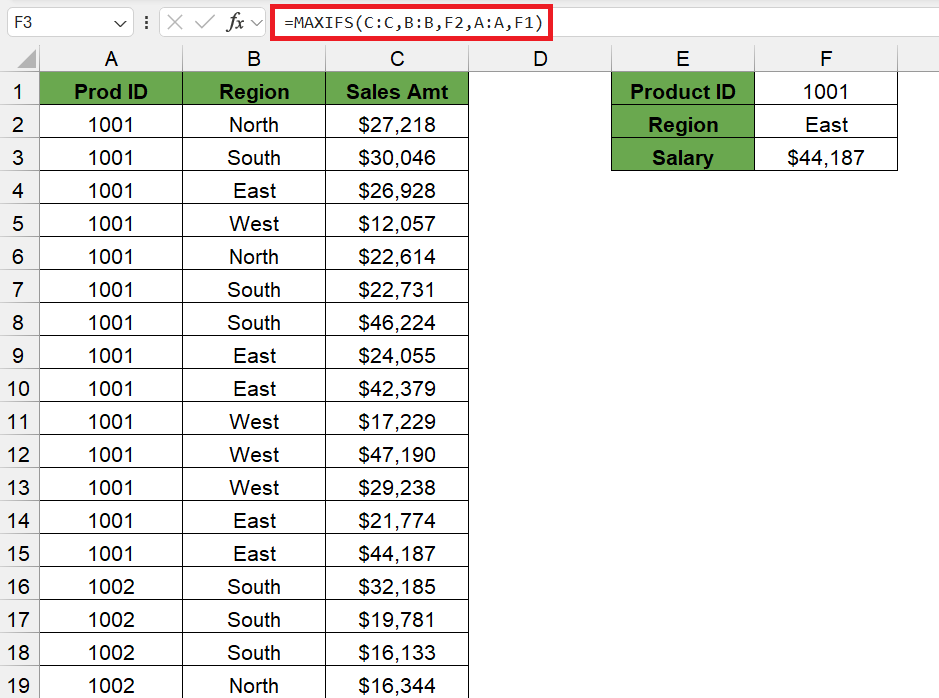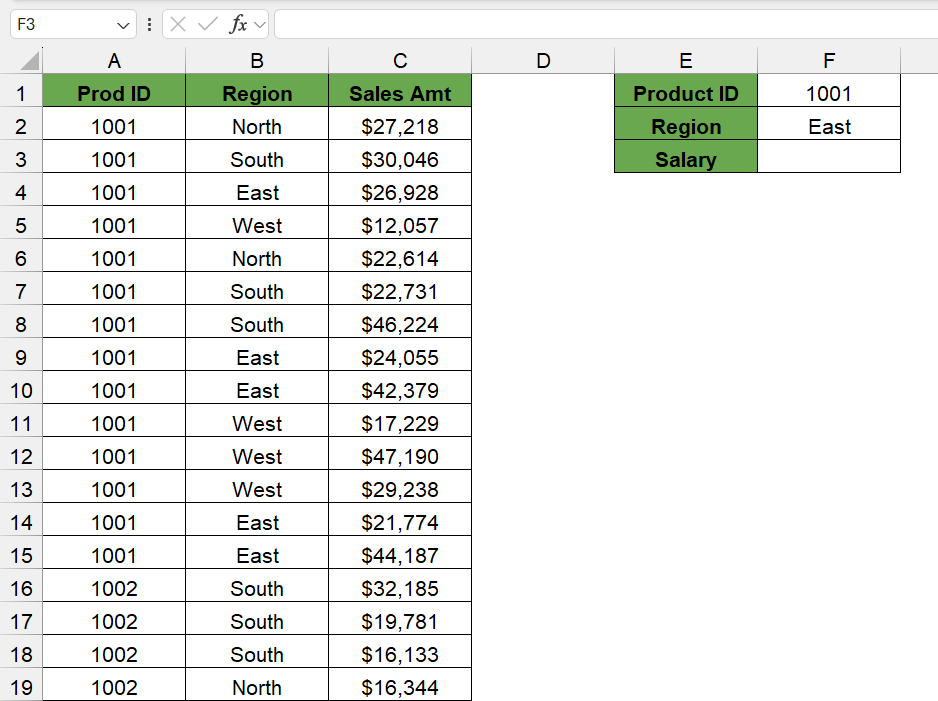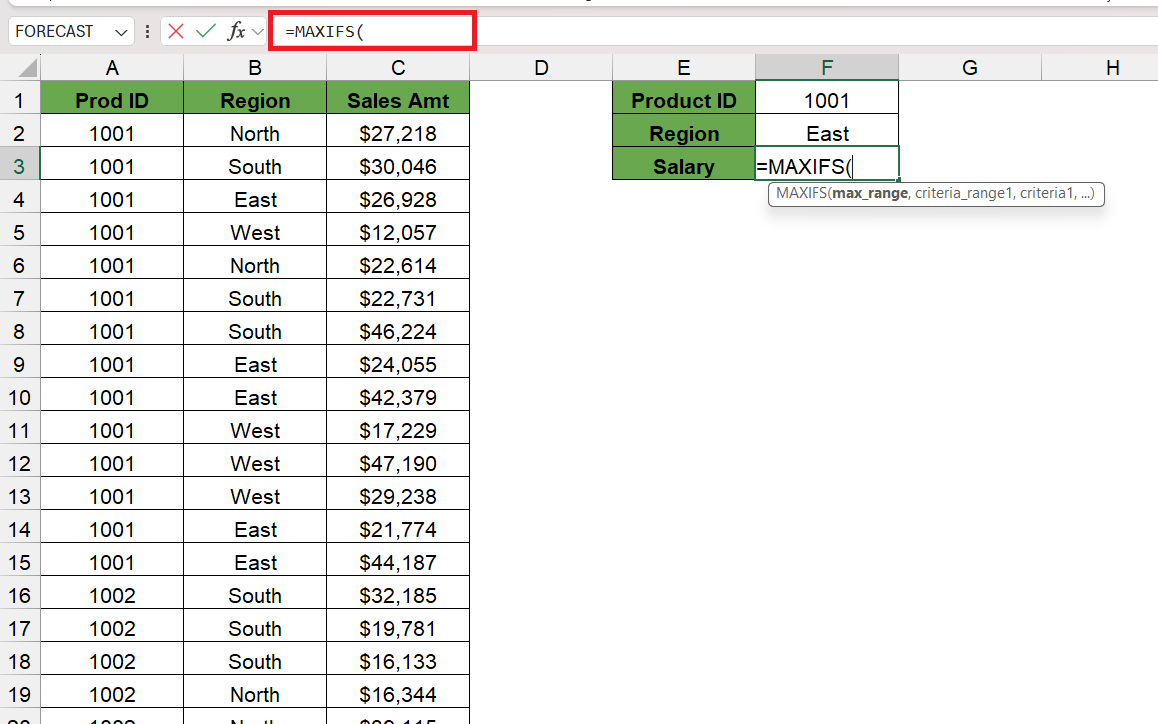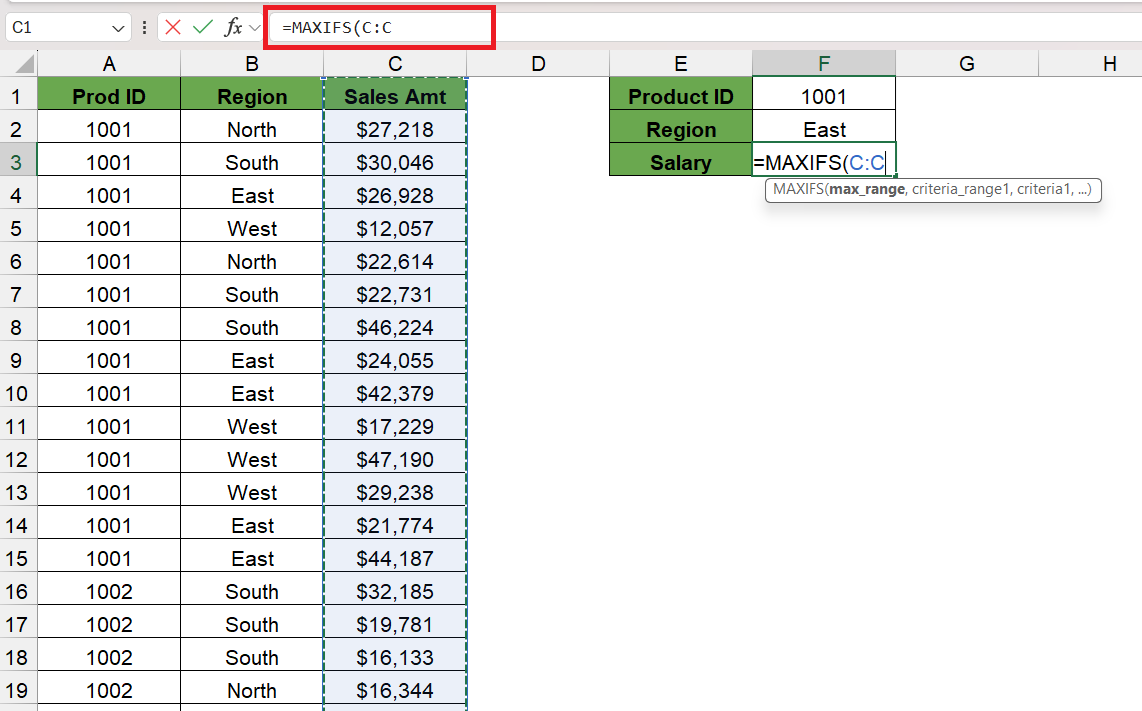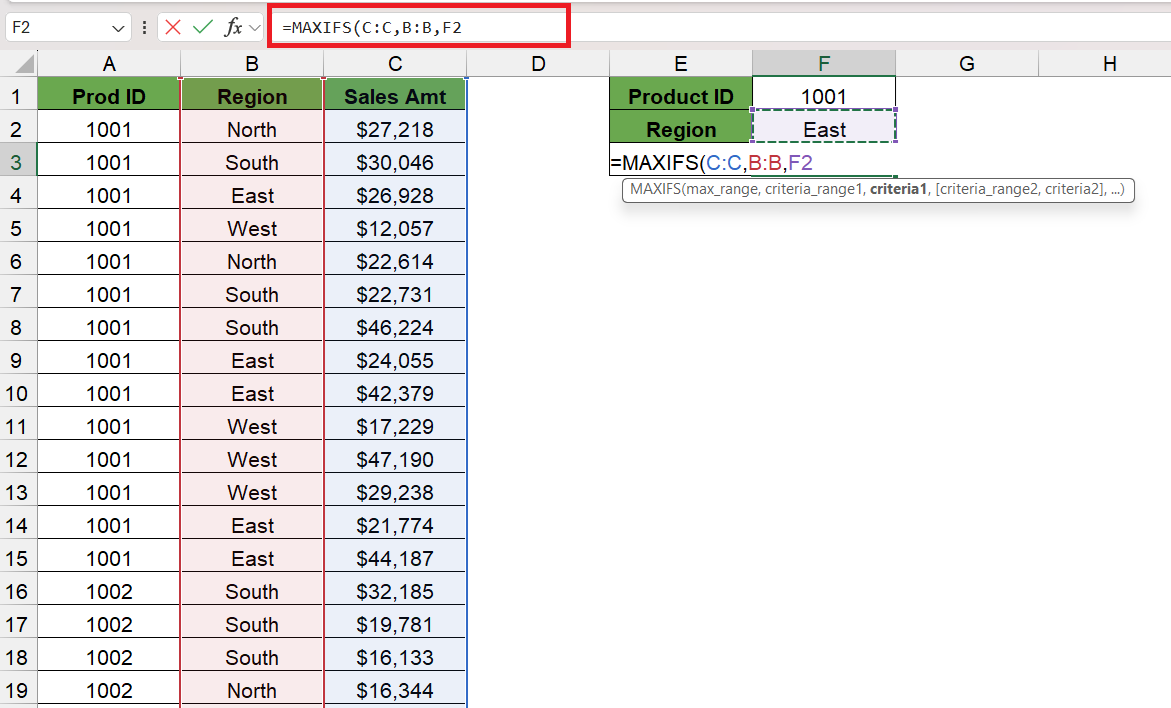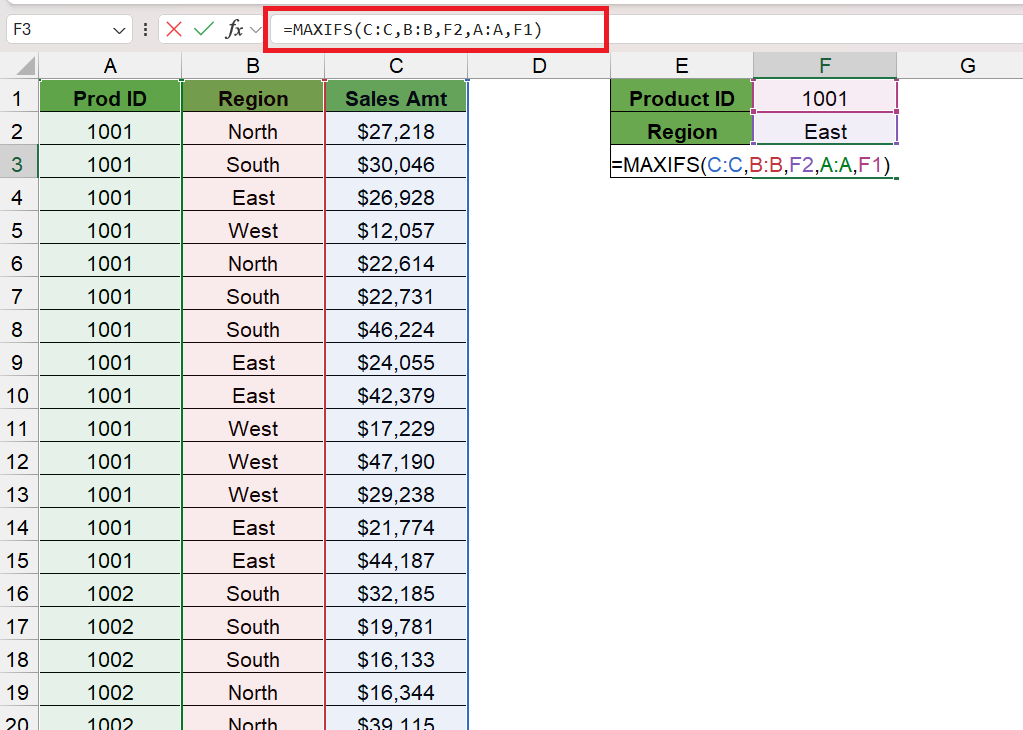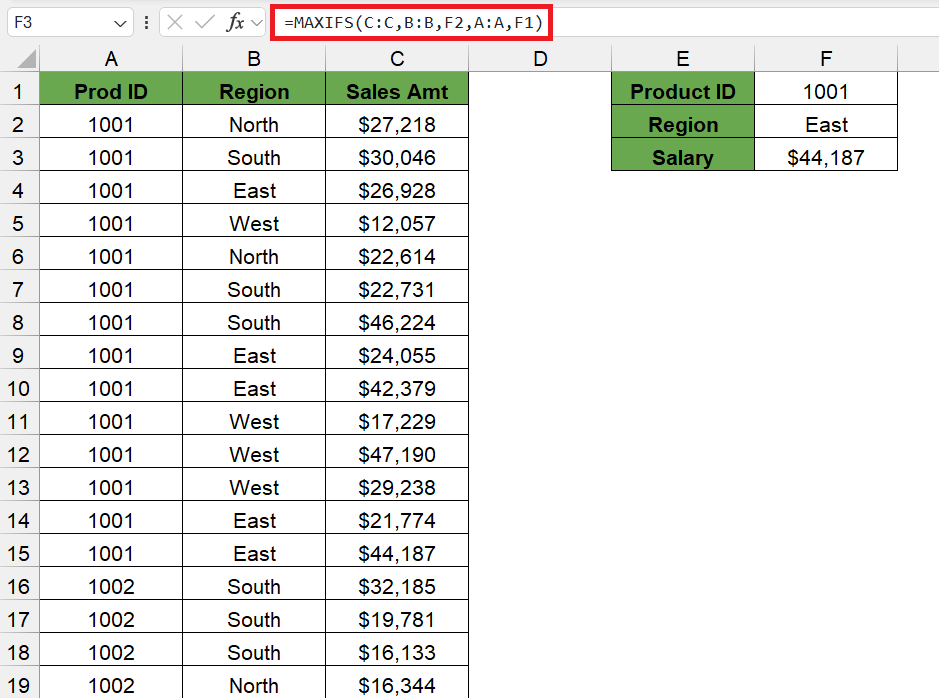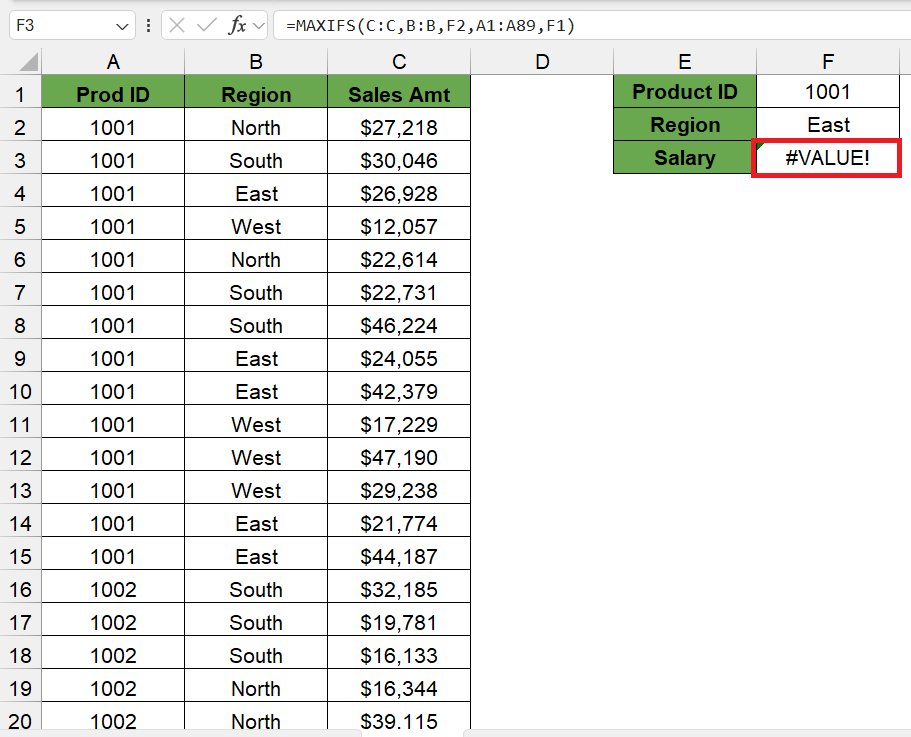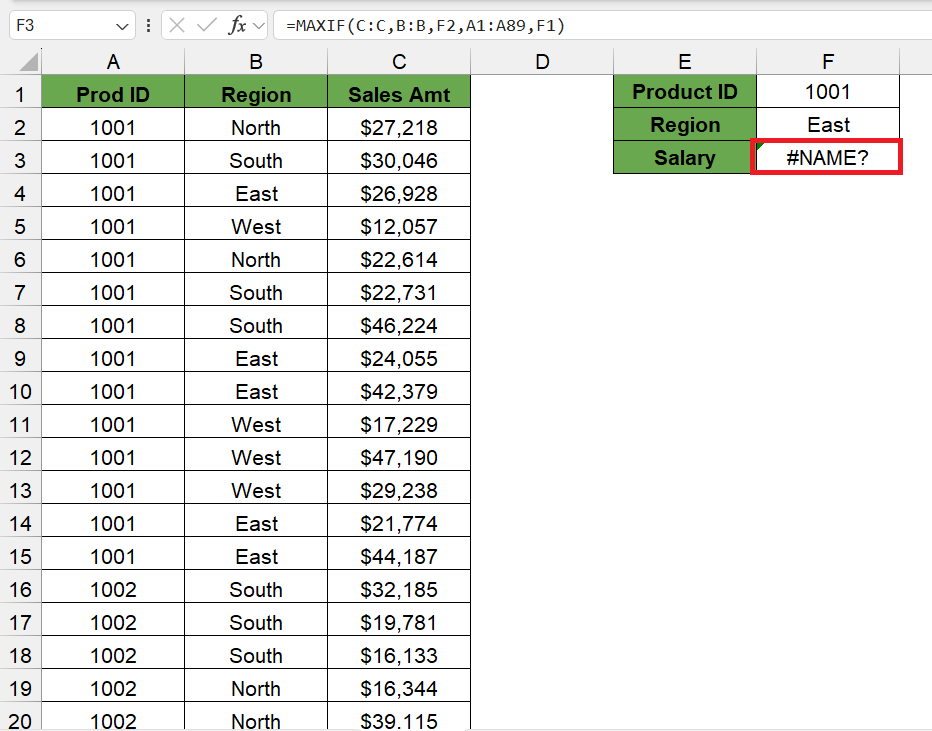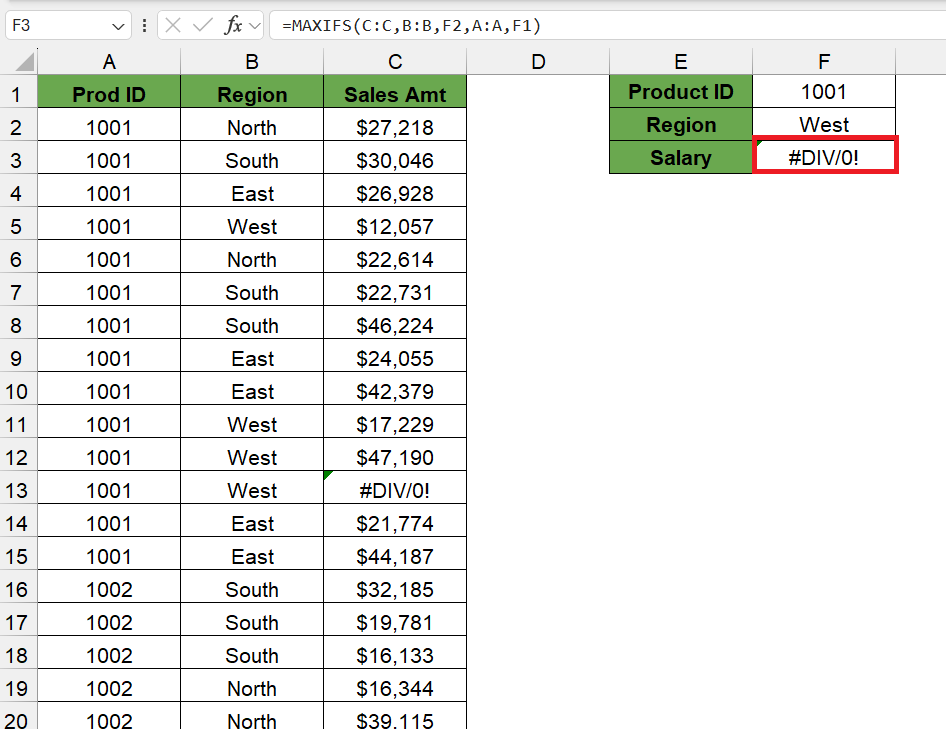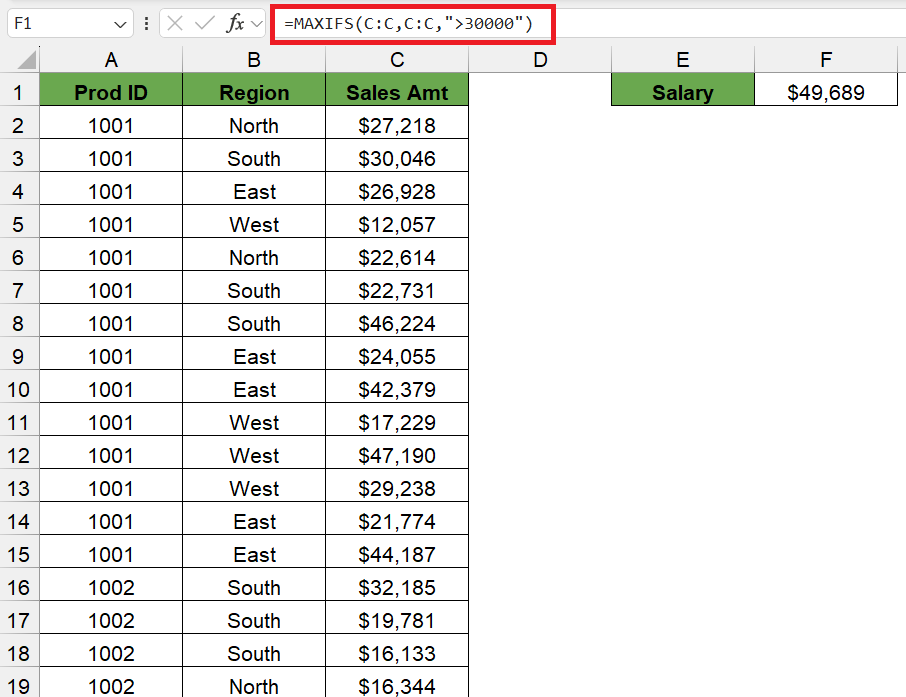The MAXIFS formula in Microsoft Excel is a powerful tool designed to find the maximum value in a range based on one or more criteria. It seamlessly integrates the functionality of ‘MAX‘ and ‘IFS‘ to filter and analyze data according to specific conditions. This tutorial will guide you through the process of employing the MAXIFS formula, and enhancing your data sorting and decision-making processes in Excel.
Key Takeaways
- The MAXIFS formula in Excel is used to find the maximum value in a range based on one or more criteria.
- To apply MAXIFS, specify the range with the max values, the criteria range(s), and the corresponding criteria.
- Logical operators can be combined with criteria in MAXIFS to refine the conditions, for example, “>50” or “<=100.”
- MAXIFS can be used with dates, numbers, and text criteria to handle various types of data sorting and analysis.
Download Excel Workbook and follow along the tutorial on How to Use MAXIFS formula in Excel – Download excel workbookMAXIFS-in-Excel.xlsx
Table of Contents
Unlocking the Power of MAXIFS in Excel
What is MAXIFS and Why Use It?
MAXIFS is a powerful function introduced in Microsoft Excel 2019 that serves as a boon for data analysts and anyone needing to perform complex data analysis tasks. The purpose of MAXIFS is to return the maximum value from a data set that meets specific, user-defined conditions or criteria.
Why Use MAXIFS?
The utility of the MAXIFS function lies in its capacity to filter and analyze large data sets, identifying the peak value that aligns with distinct conditions. This could include finding the highest sales value for a certain month, pinpointing the maximum test score from a specific class, or determining the tallest building in a particular city, provided you have the necessary data in Excel. MAXIFS streamlines this analytical process, which would otherwise entail arduous and time-consuming manual data filtering.
The Syntax Breakdown of MAXIFS
Understanding the syntax of MAXIFS is vital to harness its capability to analyze data meaningfully. Here is a breakdown of the function’s syntax:
MAXIFS(max_range, criteria_range1, criteria1, [criteria_range2, criteria2], …)
- max_range: This is the range of cells that contains the data from which you want to find the maximum value. It’s important to note that this range must consist of numerical data.
- criteria_range1: This is the range of cells that your first condition will be applied to. It should be the same size and shape as the max_range to ensure proper comparison.
- criteria1: The criteria1 argument is the condition that you specify for the first range. It determines which cells in the criteria_range1 should be considered for evaluating the max_range. The criteria can be a number, expression, a cell reference, text, or a function that defines which cells will be evaluated.
For additional conditions:
- criteria_range2, criteria2, …: You can add up to 126 range/criteria pairs. These subsequent ranges and criteria work similarly to criteria_range1 and criteria1. Each new condition is applied concurrently with all previous conditions, meaning that only the cells that meet all specified conditions will be considered when determining the maximum value.
Key Points to Remember:
- The ranges (criteria_range1, etc.) must have the same dimensions as max_range.
- MAXIFS returns 0 if no cells meet the criteria.
- It ignores cells that are empty and do not meet the criteria.
- A #VALUE! error occurs if the criteria ranges do not match the size of max_range.
- MAXIFS can only consider ranges, not arrays.
By correctly structuring your MAXIFS formula according to this syntax, you can efficiently and accurately derive the maximum values based on complex, multi-layered criteria from your data sets.
Diving into MAXIFS – A Step-By-Step Guide
With your data well-organized, you are now ready to write your first MAXIFS formula. Let’s walk through an example to illustrate how this is done:
Step 1: Identify Your Data Ranges
Imagine you have a spreadsheet with sales data. Column A lists product IDs, column B lists regions, and column C lists the sales figures. You want to find the highest sales figure achieved in the East Region by Product 1001.
Step 2: Open the MAXIFS Formula
Click into the cell where you want the result to appear. Type =MAXIFS( to initiate the MAXIFS function.
Step 3: Specify the max_range
After the opening bracket, add the range that contains the values you’re seeking the maximum for. Assuming the sales figures are in cells C:C, you write: =MAXIFS(C:C,
Step 4: Add Your Criteria Range and Criteria
Next, you set the range to which your criteria will be applied, followed by the criteria itself. If you wish to find sales figures for Region (listed in range B:B) and the East region is mentioned in cell F2. Your formula will now look like this:
=MAXIFS(C:C, B:B, F2
Step 5: Add Your Second Criteria Range and Criteria
Next, you set the range to which your second criteria will be applied, followed by the criteria itself. If you wish to find sales figures for the Product IDs (listed in range A:A) and the Product ID 1001 is mentioned in cell F1. Your formula will now look like this:
=MAXIFS(C:C, B:B, F2, A:A, F1
Step 5: Close the Formula
Add the closing parenthesis and press Enter.
=MAXIFS(C:C, B:B, F2, A:A, F1)
Once you press Enter, Excel will process the formula and return the maximum sales figure for East region and Product ID 1001 in your designated cell.
Step 6: Review the Result
Double-check the value returned by the MAXIFS function to ensure it makes logical sense given your data. It may also be helpful to validate it by manually filtering your data for the “January” criteria and verifying that it is indeed the highest value.
That’s it! You’ve successfully written your first MAXIFS formula. As you become more familiar with the function, you’ll be able to incorporate multiple criteria and handle more complex data sets with ease.
Dealing with Errors and Special Cases
When using the MAXIFS function in Excel, you may encounter errors or special cases that can affect the accuracy of your results. Learning how to handle these scenarios is key to maintaining the integrity of your data analysis.
Dealing with Errors
- #VALUE! Error: This occurs if the ranges you’ve specified are not the same size. Always check that each criteria range is the same dimension as your max_range.
- #NAME? Error: This can happen if you’ve misspelled the function name or left out the equals sign before the function name. Make sure you’ve typed the function name correctly and included ‘=’ at the beginning.
- Error Values in Data: If your data range contains errors like #DIV/0!, #N/A, etc., these can interfere with calculating the maximum value. Use the IFERROR function to handle these cases.
Special Cases
- Criteria with Logical Operators: When your criteria involve logical operators such as
>,<,<=, or>=, they must be entered as text, which means quotation marks are needed.
For instance, to find the highest sales figure over $30000, your criteria may look like: =MAXIFS(C:C, C:C, ">30000")
- Using Wildcards: If you want to match patterns rather than exact values, wildcards such as
*(matches any number of characters) or?(matches a single character) can be used in your criteria. - Working with Dates: Excel stores dates as serial numbers, so ensure your criteria for dates match Excel’s format. It’s often best to refer to a cell with the date rather than typing a date directly into your formula.
- Non-Numerical max_range: MAXIFS is designed to work with numerical data. If your max_range includes non-numerical values, consider revising the range or preprocessing your data to segregate numeric values.
Real-World Applications of MAXIFS
Analyzing Sales Data Effectively
When it comes to sales analysis, the MAXIFS function can be an invaluable tool for deriving insights from your data. Below is a guideline on how you can effectively utilize MAXIFS for analyzing sales data.
Identify Key Performance Indicators (KPIs)
Before diving into MAXIFS, determine the KPIs you need to analyze. This could include the highest sales per region, the best-performing product, or the top sales quota achievement for a time frame.
Use MAXIFS for Comparative Analysis
MAXIFS proves especially useful when comparing sales across different categories. For example:
- To find the highest sales in a specific quarter across multiple regions.
- To identify the maximum sale for a specific product category during a promotional period.
Integrate Time-Based Criteria
Sales often fluctuate over time, and MAXIFS can help pinpoint when certain sales peaks occur. Use MAXIFS with date ranges to find:
- The best sales month or quarter for a particular year.
- The highest sales achieved during a seasonal peak.
Graphical Data Representation
After using MAXIFS to find the desired values, presenting this data graphically can enhance comprehension. Pivot Tables, charts, and conditional formatting can complement MAXIFS by offering a visual representation of data points that are most significant.
For instance, a Pivot Chart that highlights the maximum sales per region could quickly convey where sales strategies are most effective.
Tips and Tricks to Master MAXIFS
Avoiding Common Pitfalls
When working with MAXIFS, even seasoned Excel users can stumble into common pitfalls that can skew results or lead to frustration. Below are tips to help you avoid these common mistakes and ensure your MAXIFS formulas are robust and error-free.
Consistent Range Sizes
One of the most common errors with MAXIFS is mismatched range sizes. Always ensure your criteria ranges are the same size as the max_range. Using named ranges can help minimize this risk.
Criteria Syntax
Be meticulous with your criteria. Text criteria should be enclosed in quotation marks, and logical criteria should be correctly formatted. For example, using ">5" instead of >5 is necessary when specifying the criteria in the MAXIFS function.
Avoiding Circular References
Ensure that your max_range does not include the cell where you’re writing the MAXIFS formula, as this will create a circular reference and result in an error.
Dealing with Text and Boolean Values
MAXIFS is designed for numerical data, so attempting to use MAXIFS directly on text or Boolean data (TRUE/FALSE) will not work. Convert such data to numeric values representing the text or Boolean conditions before applying MAXIFS.
Using Proper Error Handling
Incorporate error checks within your MAXIFS formula to handle common errors like #DIV/0!, #N/A, etc. Functions like IFERROR or conditional structures can prevent errors from propagating.
Defensive Formula Writing
Consider other potential changes to your data over time and build your formulas defensively to accommodate those changes. For example, use dynamic named ranges that adjust as new data is added.
Testing in Parts
When creating complex MAXIFS formulas, test each part of your formula separately. This step-by-step approach can help identify where things may be going wrong.
Understanding Version Compatibility
MAXIFS was introduced in Excel 2016. If you are collaborating with users who have earlier versions of Excel, they won’t be able to use or view the function.
Documentation
Keeping your formulas commented on and your work documented can save you or others time in understanding the approach taken, especially in more sophisticated spreadsheets.
By staying vigilant about these areas and adhering to best practices when formulating your MAXIFS scenarios, you can dramatically reduce the likelihood of encountering errors and enhance your ability to derive meaningful insights from your data using Excel’s powerful MAXIFS function.
FAQ – Demystifying MAXIFS in Excel
How does MAXIFS compare to using MAX with IF statements?
MAXIFS in Excel allows you to find the maximum value based on multiple criteria, making it more versatile than using MAX with IF statements, which is limited to a single condition.
Is there a way to use wildcards within the MAXIFS function?
No, MAXIFS does not support wildcards directly. However, you can use functions like SUMPRODUCT or a combination of other functions to achieve a similar result with wildcard-like behavior.
What is the difference between Max and Maxifs in Excel?
The main difference between MAX and MAXIFS in Excel is that MAX returns the maximum value in a range without considering any criteria, while MAXIFS allows you to find the maximum value based on specified conditions.
What is the formula for maximum on Excel?
The formula for finding the maximum value in Excel is =MAX(range), where “range” represents the cells or range of values for which you want to find the maximum.
John Michaloudis is a former accountant and finance analyst at General Electric, a Microsoft MVP since 2020, an Amazon #1 bestselling author of 4 Microsoft Excel books and teacher of Microsoft Excel & Office over at his flagship MyExcelOnline Academy Online Course.

